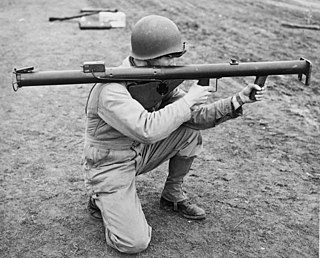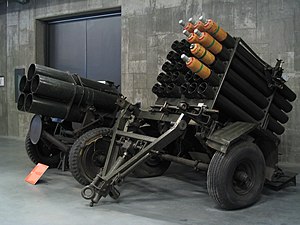
Juno or Juno Beach was one of five beaches of the Allied invasion of German-occupied France in the Normandy landings on 6 June 1944 during the Second World War. The beach spanned from Courseulles, a village just east of the British beach Gold, to Saint-Aubin-sur-Mer, and just west of the British beach Sword. Taking Juno was the responsibility of the First Canadian Army, with sea transport, mine sweeping, and a naval bombardment force provided by the Royal Canadian Navy and the British Royal Navy as well as elements from the Free French, Norwegian, and other Allied navies. The objectives of the 3rd Canadian Infantry Division on D-Day were to cut the Caen-Bayeux road, seize the Carpiquet airport west of Caen, and form a link between the two British beaches on either flank.

Omaha Beach was one of five beach landing sectors designated for the amphibious assault component of Operation Overlord during the Second World War. On June 6, 1944, the Allies invaded German-occupied France with the Normandy landings. "Omaha" refers to an 8-kilometer (5 mi) section of the coast of Normandy, France, facing the English Channel, from east of Sainte-Honorine-des-Pertes to west of Vierville-sur-Mer on the right bank of the Douve River estuary. Landings here were necessary to link the British landings to the east at Gold with the American landing to the west at Utah, thus providing a continuous lodgement on the Normandy coast of the Bay of the Seine. Taking Omaha was to be the responsibility of United States Army troops, with sea transport, mine sweeping, and a naval bombardment force provided predominantly by the United States Navy and Coast Guard, with contributions from the British, Canadian and Free French navies.

The Normandy landings were the landing operations and associated airborne operations on Tuesday, 6 June 1944 of the Allied invasion of Normandy in Operation Overlord during World War II. Codenamed Operation Neptune and often referred to as D-Day, it was, and still is, the largest seaborne invasion in history. The operation began the liberation of France and laid the foundations of the Allied victory on the Western Front.

A rocket launcher is a weapon that launches an unguided, rocket-propelled projectile.

Landing craft are small and medium seagoing watercraft, such as boats and barges, used to convey a landing force from the sea to the shore during an amphibious assault. The term excludes landing ships, which are larger. Production of landing craft peaked during World War II, with a significant number of different designs produced in large quantities by the United Kingdom and United States.

Amphibious warfare is a type of offensive military operation that today uses naval ships to project ground and air power onto a hostile or potentially hostile shore at a designated landing beach. Through history the operations were conducted using ship's boats as the primary method of delivering troops to shore. Since the Gallipoli Campaign, specialised watercraft were increasingly designed for landing troops, material and vehicles, including by landing craft and for insertion of commandos, by fast patrol boats, zodiacs and from mini-submersibles. The term amphibious first emerged in the United Kingdom and the United States during the 1930s with introduction of vehicles such as Vickers-Carden-Loyd Light Amphibious Tank or the Landing Vehicle Tracked.

The Amphibious Vehicle, Tracked (LVT) is an amphibious warfare vehicle and amphibious landing craft, introduced by the United States Navy and United States Marine Corps. The United States Army, Canadian Army and British Army used several LVT models during World War II, and referred to those vehicles as "Landing Vehicle, Tracked."

Coastal artillery is the branch of the armed forces concerned with operating anti-ship artillery or fixed gun batteries in coastal fortifications.

DD or Duplex Drive tanks, nicknamed "Donald Duck tanks", were a type of amphibious swimming tank developed by the British during the Second World War. The phrase is mostly used for the Duplex Drive variant of the M4 Sherman medium tank, that was used by the Western Allies during and after the Normandy Landings in June 1944.

The Unrotated Projectile (UP) was a British anti-aircraft and ground-bombardment rocket of the Second World War. A 7-inch version was developed for the Royal Navy by Alwyn Crow of the Projectile Development Establishment of the Ministry of Supply at Fort Halstead. It proved unreliable and ineffective and was withdrawn from use in 1941. Development of the concept led to the UP-2 and UP-3, which had diameters of 2-inch and 3-inch respectively but were longer. The latter was used as the basis of the Z Battery anti-aircraft weapons and later developed in air-to-ground form as the RP-3, used against ground forces and shipping by aircraft like the Hawker Typhoon and the Bristol Beaufighter. In 1944–1945 several adaptations for general bombardment were produced, including Sea Mattress, Land Mattress, LILO and Tulip.

Landing Craft Assault (LCA) was a landing craft used extensively in World War II. Its primary purpose was to ferry troops from transport ships to attack enemy-held shores. The craft derived from a prototype designed by John I. Thornycroft Ltd. of Woolston, Hampshire, UK. During the war it was manufactured throughout the United Kingdom in places as various as small boatyards and furniture manufacturers.

The Landing Craft Infantry (LCI) were several classes of landing craft used by the Allies to land large numbers of infantry directly onto beaches during World War II. They were developed in response to a British request for seagoing amphibious assault ships capable of carrying and landing substantially more troops than their smaller Landing Craft Assault (LCA). The result was a small steel ship that could land 200 men, traveling from rear bases on its own bottom at a speed of up to 15 knots.

Operation Overlord was the codename for the Battle of Normandy, the Allied operation that launched the successful invasion of German-occupied Western Europe during World War II. The operation was launched on 6 June 1944 (D-Day) with the Normandy landings. A 1,200-plane airborne assault preceded an amphibious assault involving more than 5,000 vessels. Nearly 160,000 troops crossed the English Channel on 6 June, and more than two million Allied troops were in France by the end of August.

A Z Battery was a short range anti-aircraft weapon system, launching 3 in (76 mm) diameter rockets from ground-based single and multiple launchers, for the air defence of Great Britain in the Second World War. The rocket motors were later adapted with a new warhead for air-to-ground use as the RP-3.

Operation Infatuate was the code name given to an Anglo-Canadian operation in November 1944 during the Second World War to open the port of Antwerp to shipping and relieve logistical constraints. The operation was part of the wider Battle of the Scheldt and involved two assault landings from the sea by the 4th Special Service Brigade and the 52nd (Lowland) Division. At the same time the 2nd Canadian Infantry Division would force a crossing of the Walcheren Causeway.
The 4th Special Service Brigade was a brigade-sized formation of the British Commandos formed during the Second World War in March 1944 from battalion-sized units of the Royal Marines. Due to the success of the British Army Commandos' operations in Norway, the Channel Islands, St. Nazaire, and the Middle East, the Admiralty dissolved the Royal Marines Division in late 1942 and reorganized its amphibious assault infantry into eight additional Commando units.

An amphibious warfare ship is an amphibious vehicle warship employed to land and support ground forces, such as marines, on enemy territory during an amphibious assault.

The LSM(R)-188 class was a class of twelve Landing Ship Medium (Rocket) of the United States Navy during World War II. They were used in the Pacific War for bombardment of shore positions.
No. 48 Commando was a battalion-sized formation of the British Commandos, formed in 1944 during the Second World War. No. 48 Commando was assigned to the 4th Special Service Brigade and served in North West Europe, taking part in the Normandy landings and operations around Ostend and Antwerp before being disbanded after the war in January 1946.

The 4.5-Inch Beach Barrage Rocket, also known as "Old Faithful", was a 4.5-inch (110 mm) rocket developed and used by the United States Navy during World War II. Originally developed from the "Mousetrap" anti-submarine rocket, it saw widespread use during the war, being replaced by more powerful rockets toward the end of the conflict.

















